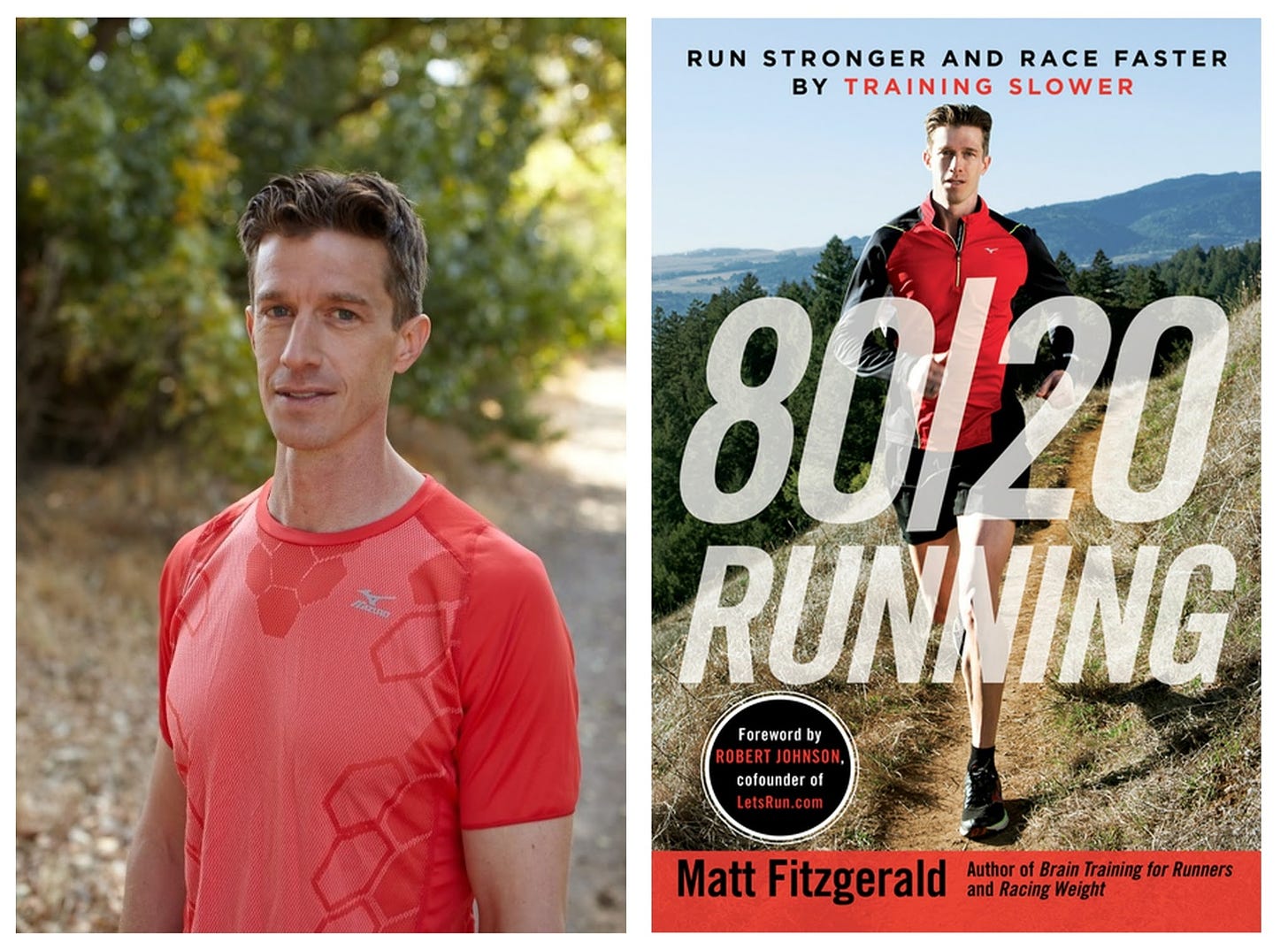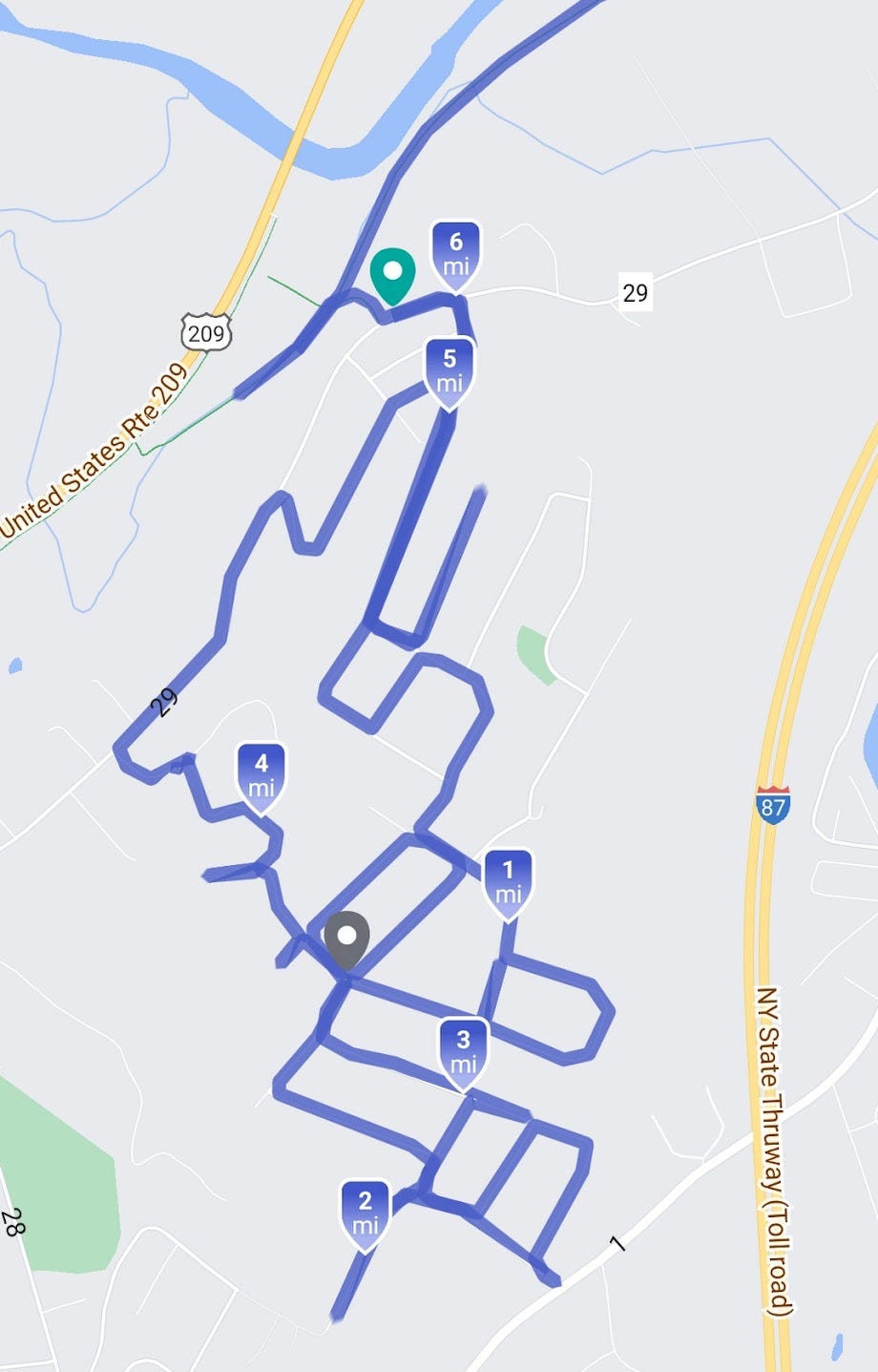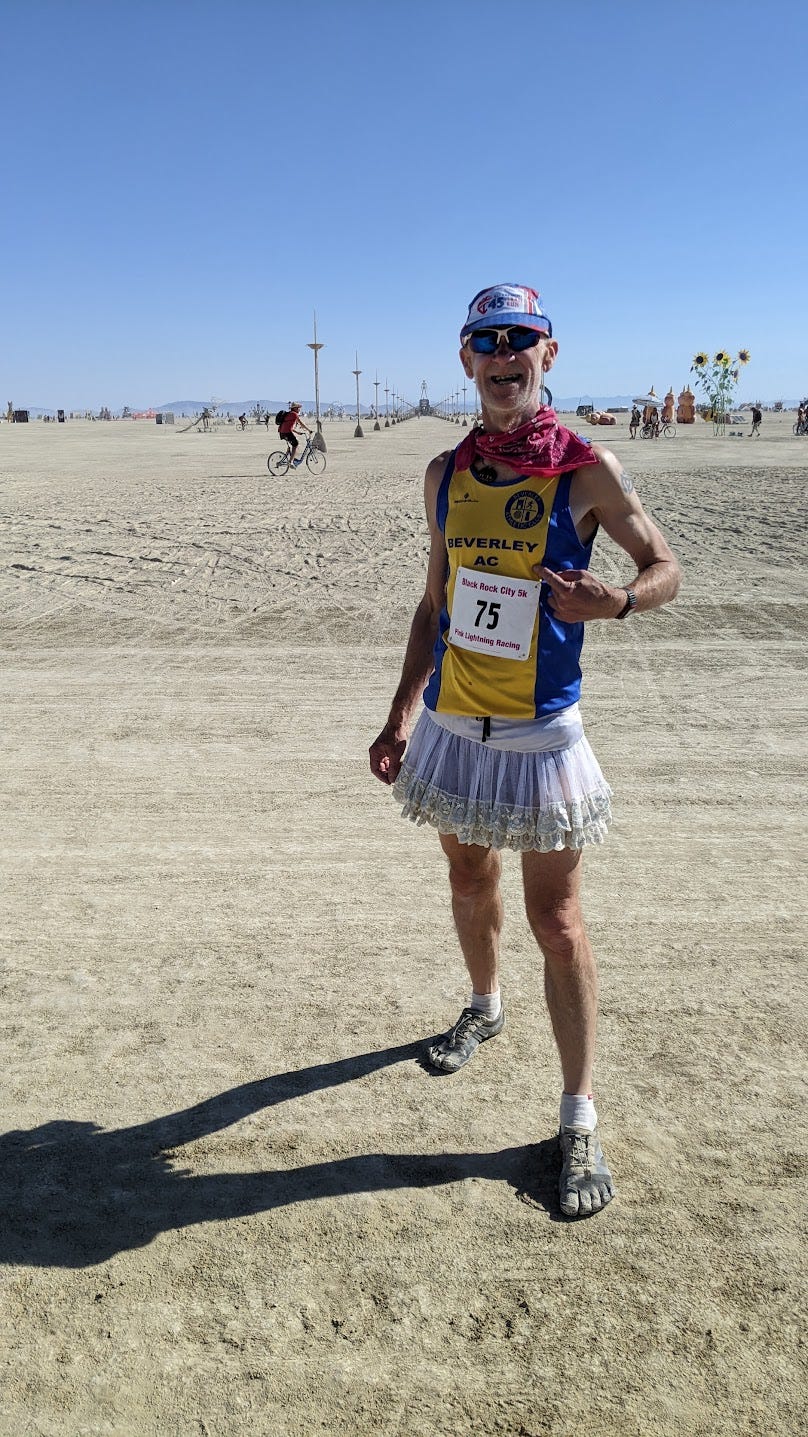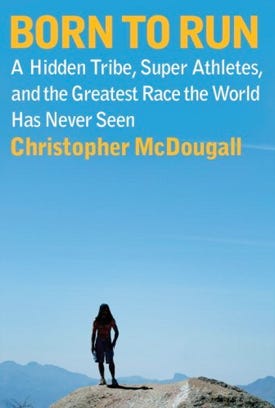(I'm A) Road Runner...
Ten Tips for the tarmac, from someone who has learned them the hard way. (Tips 1-4.)
Q: How do you know your friend has run a marathon?
A: Don't worry, they'll tell you...
This past Sunday, May 26 2024, I completed my 19th road marathon, at the Run Vermont Marathon in Burlington, an especially great course in an exceptionally beautiful city. Given that I am 60 years old already (sigh), this hardly makes me an expert, let alone excessive, in the field of road running; later in the day, I met a man my age fresh out of Lake Champlain in his wetsuit, recovering from his 24th successive Run Vermont, and his 101st marathon overall. He didn’t appear to be particularly impressed with his tally either.
But allowing that all my marathons have been sub 4-hr, many of them at a Boston Qualifier pace, that I have run a similar or greater number of ultra-marathons (generally defined as long distance races off-road, i.e. on-trail), placed well in distances anywhere from 1 mile to 100km, from flat tracks to 15,000ft of elevation in a single event, won the occasional medal in my age group, and perhaps most importantly, never posted a DNF – a Did Not Finish – in my life, it is always possible that I might know something about the subject of running by now
So when someone says to me, as happened last Sunday evening chatting with some college-aged friends of my older son at a Burlington brewery, “I like running and would love to run a marathon, but I’m scared to do so,” I am happy to respond with what I trust to be helpful advice, as follows:
“You should be scared! Marathon are awful! They’re an exercise in masochism! They don’t make sense! No one in their right mind should ever sign up for one unless they know what they’re in for! And even then, they probably shouldn’t!”
And when that same college-aged person appears unperturbed, asks a couple of follow-up questions, and then says, sheepishly, “I only recently started running, I feel like I’m late to the sport,” I can respond with less flippancy and equal sincerity, somewhere along the lines of the following:
I ran my first marathon at age 38. I posted my fastest times across almost all distances in my 50s. I’ve completed my longest distances in my most recent years. By not running myself into the ground in my youth, I avoided fatigue and sport-ending injuries. And while I may be slowing down in pace with age, I appear to be recovering quicker from the event at hand. I genuinely think that at age 60, I am a better runner than I ever have been. And so, I can confidently say to that 23-year-old what I would say to a 73-year-old, and anyone in-between: you’re never too old to start running. Again.
Because, let’s be clear about this, everyone already is a runner. Think about it: as infants, then toddlers, then as little kids, we scurry about from room to room, we run barefoot across fields and beaches, and occasionally hot sand or brass tacks by accident. We run contentedly all throughout our childhoods… until we are suddenly told not to, by teachers and parents and policemen and everyone else in society who deem it somehow inappropriate at a certain age to do what comes so naturally to us, unless it’s part of an organized – and usually competitive – school sport. Our innate love of running for the sheer fun of it is so effectively militarized out of us that, as Christopher McDougall relates in his definitive book on the subject, Born To Run, doctors around the word typically advise patients who’ve picked up running-related injuries to stop running, when the advice really should be to learn to run properly, naturally, comfortably, with ease and with joy.
In penning this long-overdue second article on the subject of my own running experiences, I’d like to avoid a merely chronological account and see if I can’t elaborate upon some of those descriptors from the previous sentence, as learned along the way. (Per the title of this particular post – (I’m a) Road Runner – this will be confined to tarmac, concrete and the track, with another article about trail running, my real love in life, to follow.)
Like almost all of us amateurs, I’ve made pretty much every mistake known to man over 35-odd years of running semi-seriously. But here I am, still standing, still running those consistently sub-4hr marathons if not sub-20-minute 5ks, and still smiling at the finish line, and it would make me smile even more if what follows encourages you to engage your inner runner too. So, here goes, albeit with the usual pre-emptive 21st century disclaimer: I’m not a doctor or a licensed sports therapist/psychologist/coach. I’m just a soul whose intentions are good…
From McDonald's to Marathons
1. RUN OFTEN (ENOUGH)
Picking up where Part 1 left off (you can read it above; posts older than 12 weeks are behind the archive paywall though, hey, it’s the paid subscriptions that keep this site going), somewhere very early in the 1990s: I was in my mid-20s and relatively new to Manhattan from London when I began dating someone who would later become my wife, and then the mother to our two wonderful children. It turned out she was a runner. In fact, she ran every day. And when she got to know me better, and see the lifestyle I shared with my fellow British/Irish footie-playing mates – which was essentially, to play hard, then rehydrate with beer even harder, only to wake up with thighs that felt like lampposts and equally unable to flex – she suggested that maybe I join her for a post-work jog now and then.
“But I hate jogging,” I protested. Jogging always seemed like a waste of time to someone like me. Surely we either go for it – playing football competitively alongside/against your mates – or we don’t bother? Jogging was soft. I saw the kind of people who jogged around Manhattan and I didn’t really want to be them. Besides, I wasn’t a runner, was I?
Inevitably, I took the bait and joined her a couple of times for a relatively comfortable excursion out to the East River Park and back. And what did I learn but that (of course) she was right? One jog a week in-between games, and my recovery mornings no longer felt like I was trying to navigate a Sherman tank out of bed. A second jog, in-between the weekend game and the mid-week practice, and suddenly I felt fitter, livelier, stronger… and annoyingly, so it seemed at the time, quite intrigued by the idea of running for the pure fun of it.
Unlike my future ex-wife, however, I never aspired to do it every day. And nor should you. Shortly after we met, my future ex- ran herself into the ground. She developed chronic fatigue and soon stopped running entirely. Similarly, there will be some of you reading this who can’t run due to a serious physical ailment, and I do empathize – but I would also just encourage you to apply some of what follows to something else (that you may already be doing): hiking, swimming, cycling, rowing, essentially anything that is cardiovascular, which is the key aspect to all of this. Getting our heart rate up, pumping more blood into our veins, releasing dopamine into our brains to unlock the “runner’s high,” all of this is good for us physically and mentally. Find something. Anything. Running just happens to be the most innate of them all.
My own suggestion then: if you’re a beginner, start out trying to jog something just twice a week. When you’re ready, up it to three times a week. Eventually, maybe you want to run every other day, which is pretty much what I do. If it makes you feel so damn good you want to do more of it, do more of it on the days that you run. But from experience and based on medical science, I’d suggest filling the other days with cross-training – the aforementioned swimming, cycling, rowing, or yoga or strength work – so that you can run even better on the days that you run. And please, don’t forget to take a day off from everything now and then. You don’t want chronic fatigue.
Wordsmith currently alternates Midweek Updates full of pop culture recommendations, with longer weekend reads like this one. If you would like to support my work and ensure it keeps coming, please consider a subscription, an upgrade to paid if you already subscribe, a share, or a referral. Wordsmith is ad free, sponsor free, and hopefully, BS free, and I hope to keep it that way.
2. RUN EASY
That 26-year-old Manhattan me wasn’t very good at doing easy. I worked incredibly hard, played incredibly hard, and felt therefore that I needed to run incredibly hard as well. No pain, no gain, right?
Wrong! As Matt Fitzgerald lays out in the subtitle to his book on the subject, 80/20 Running, you can Run Stronger and Race Faster by Training Slower. In short, doing 80% of your work-outs at low intensity and reserving just 20% of your work-out time for high intensity (this applies across most cardiovascular activities) is not just a good recipe for us amateurs: it’s the philosophy proven over time to work for the professionals as well. You can hear Matt talk about this philosophy – and about the proven benefits of exercise in general – on my One Step Beyond podcast here.

I didn’t learn this simple 80/20 metric until far down the line. And to be clear, I don’t keep spreadsheets measuring my heart rate, because I don’t measure my heart rate to begin with. I do a lot of running by feel, which admittedly only comes with time. The best way to keep to this target is to simply not worry about a goal for your “everyday” run: just plan a set time without distance, or a set distance without taking your watch.
Either way, “low intensity”/“easy running” means that you should be able to carry out a conversation with your running partner – and these are, for sure, the bread-and-butter runs that can go better with a partner, whiling away the miles while conversing at the same time. Music or a podcast will also keep you good company if you don’t have friends (on your schedule) and can’t bear to run alone.
3. RUN VARIETY
Back to Manhattan, 1990-91. It was almost as if a baton had been passed. My then-girlfriend turned me on to running, then she stopped running. Me, I stuck with it. I suspect sheer enthusiasm got me through the first couple of years down at the East River Park. I started entering the occasional weekend race organized by the New York Road Runner’s Club. I had my football team at weekends and our competitive matches from the South Bronx to East New York to keep up the entertainment factor. My family moved to London for six months in 1996, and now I had Battersea Park to run around. Then we moved back to New York and down to Brooklyn, and though the cross-traffic jog up to and back from Prospect Park was a hassle, the park itself was a comfortable 5k loop and the total made for a good bread-and-butter 4-5 miles.
At a certain point though, it lost its allure. Even as and after I ran my first marathon in 2002, those “everyday” runs round Prospect Park started to become tedious. Everyone ran in the same direction – in fact, you could catch shit for daring to go counter-clockwise – and there were limited options to make the road aspect of the park any longer or more interesting; the local roads were heavy with traffic, and that’s no fun to run at any point. Stasis set in, and if anything, I got slower. The problem was cured by my ex- getting pregnant again and us deciding to move Upstate, where a whole world of new running options opened up, but I could have fixed the problem earlier.

So: Mix up your runs. Not just in distance and intensity as you get better, but in location. Go in a different direction out the door than you normally do. Check out a new neighborhood. If you normally go clockwise round the park, go counter-clockwise. One of the beauties of running is that you don't need fancy gear, so it's easy to get out on your travels to check out (more of) your new location. I make a point of running through almost every new place I visit overnight, and could near enough write a book on the subject. But that would make me sound like an international man of mystery, when the point of this is not so much to revisit my own story as to see if I can’t help you unleash or improve your own inner runner. On which note, I recommend that you…
4. RUN NAKED
By this I don’t literally mean you should run in your birthday suit – though out at Burning Man, there are plenty of people who do just that on the annual 50k race round the desert city, and nobody bats an eyelid. (Hey, it’s Burning Man.) But I do want to encourage to run as naturally as you can.
For example, I only run (and 90% walk) in “zero-drop” footwear – shoes that have no difference in height between heel and toe. Again, I defer to McDougall’s benchmark book Born To Run, and his deep dive into the correlation between increased running injuries and the increase in shoe companies selling us enormous, stacked heel “sneakers” that run counter to our natural gait. I’ve completed two marathons in Vibram Five Fingers (the rubber toe-gloves) and while I wouldn’t do quite that distance again in them on a road, I continue to use Vibrams on runs and especially, long days on my feet. Otherwise, look for a brand that suits your feet and makes you feel good: unlike on the trails, I don't have a particular loyalty.

Meantime, I have friends who have run ultra-marathons in sandals – like Bill Hoffman, who I hosted on my podcast One Step Beyond - and Ken Posner ditto, who rarely bothers even tying up his sandals because he prefers to go everywhere barefoot. FYI, the Kenyans and Ethiopians go barefoot also for the most part, reserving shoes for marathon races and the big buck sponsorship deals that come with them. They also typically run to school (barefoot) which is one of the many reasons that running competitively in later life against people from other nations comes so easy to them, because rather than being beaten out of them, running continues to be actively encouraged.
Even if you have been told you over-pronate, that you need orthotics, that you have “flat feet” as if there’s something wrong with that, just go barefoot jogging now and then on a beach or a grassy park; not only do I guarantee you’ll enjoy the sensation of the earth’s surface under your unprotected feet, but I suspect you’ll find your form reverting to its natural state. That way, the next time you put on some footwear, hopefully you’ll keep that form: a slight lean forward from the ankles up; a rolling mechanism with your legs rather than the cube-like traction of the high-heeled sneakers; loose arms and a free flow.
Distinct from the footwear, it’s good to run as light as possible. Hydrating is extremely important – do so before and after your runs, along with stretches and some walking to warm up and cool down - but for distances of five miles or less, you can leave the water bottle at home.
As for a portable device, hey I like to track distances on my phone, and I do often listen to music and podcasts on a training run (though rarely with earbuds since developing tinnitus), but for a race I always go without. I prefer to be completely focused on my physical and emotional self when I race, to be engaged with the people around me, to chat with them when it makes sense to do so and to let them know I’m overtaking them when it doesn’t. (Yeah, alright, I also want to be able to hear other runners shout the same at me!)
And when it comes to a marathon, though I did once listen to a 3hrs 50minute Richie Hawtin mix on a post-injury marathon with a goal of finishing at the same time as the mix (I succeeded), that was very much the exception: after all, who would want to miss out on the fun of engaging with the spectators at a big city marathon, or thanking the volunteers at every opportunity?
In short, run Zen. And if, ooh, the notion of taking your meditational or yoga mind onto the roads intrigues you further, I have another book and another One Step Beyond episode to recommend. In Still Running, author, runner and former Zen monastic Zuisei Goddard advises you to, among other things, run blindfold or with your eyes closed now and then. Running light, running barefoot or near enough, running zen… all of it will enable us to run free. And that’s the best kind of running of all.
Parts 5-10 follow below.
In the meantime, I collated my podcasts about running into one handy playlist, below. Enjoy.










How interesting, it was a budding romance that got you regularly running, whereas it was a divorce that kick-started my doing it! Tips 1-3 are great, um, not so sure about the primary focus of 4 but I like your alternative barefoot-running option for others, and I'm looking forward to seeing 5-10, Tony. Being a moderate overpronator and having to undergo a few weeks of physical therapy not long after I started running because of a knee injury that was related to the less-than-very-stable running shoes that I was wearing at the time, I'd be kind of scared to purchase the Vibrams or run very far without any shoes on at all. To be honest, years ago I had no hesitation racing in very lightweight flats without the custom orthotics that I had purchased following my patella fiasco, because I knew that having those shoes on would knock minutes off my finish times, but that was back when my legs and I were a bit younger and stronger. I'm afraid that the gray hair that I now have would turn even grayer worrying about another anatomical breakdown if I tried something that resembled those flats that I got away with wearing 20-30 years ago, or if I went out without any footwear on at all. Psychologically, I feel like nowadays I ALWAYS have to have the security blanket of the orthotics under me!
Hey Tony, a great article, you're make the point (like Vanessa Suisei) that running is a "practice" -- part of how we manage ourselves through a modern lifestyle that has become incredibly sedentary without losing our energy and our minds. I'm now at 11,177 miles barefoot (walking, hiking, running) -- took home 1st and 3rd age group wins last weekend at consecutive 5k and 15k events -- and like you feeling that I am a better runner today than in days gone by. More careful, anyhow. Irritated my meniscus in December, had to skip a couple of months and work on alignment and be more thoughtful. Climbing Van Wyck tomorrow, as part of a multi-year quest to bag 1,000 mountains barefoot - want to come along?